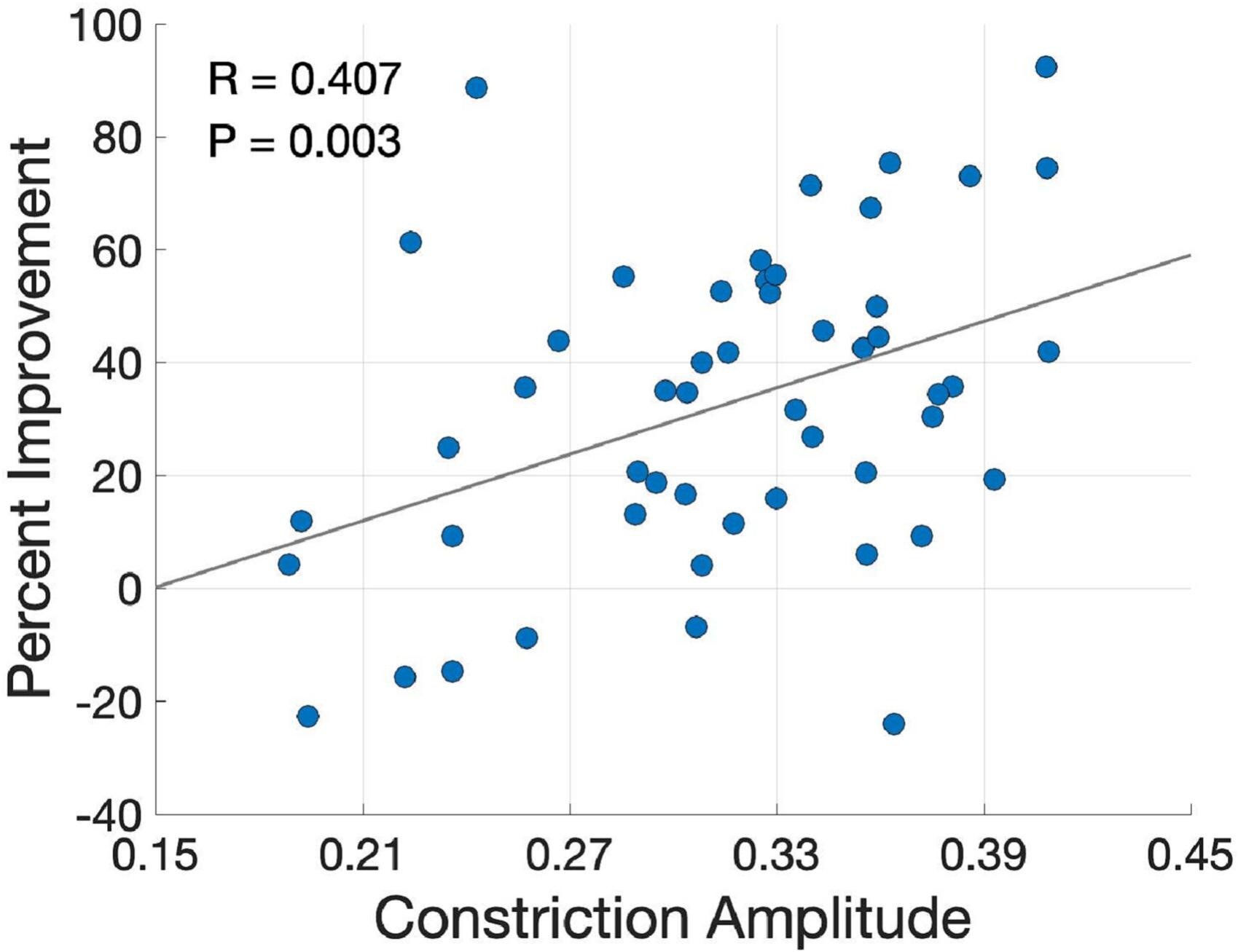× close
Correlation of the amplitude of pupillary constriction with the improvement of symptoms upon treatment 30.
New findings from UCLA Health researchers suggest that measuring changes in how students respond to light could help predict recovery from depression and personalize transcranial magnetic stimulation (TMS) treatment for major depressive disorder .
TMS is a safe, non-invasive therapy that uses magnetic fields to stimulate parts of the brain involved in mood regulation. Although TMS has been shown to be effective, not all patients respond equally well to therapy. The ability to predict who will benefit most could allow doctors to better personalize and target treatments.
In two recent studies, UCLA scientists found that a student’s response to light before treatment correlated with improvement in depression symptoms during treatment. Pupil size reflects activation of the autonomic nervous system, which controls involuntary functions and is negatively impacted in people with depression.
The first study, published in the Journal of Affective Disorders, reports the results of 51 patients who underwent daily TMS sessions. Before receiving the treatment, the researchers measured the patients’ baseline pupillary constriction amplitude, or CA: the amount the pupil narrows when exposed to light. Pupil constriction is an indicator of parasympathetic nervous system function.
The researchers found a significant association between pupil constriction amplitude at baseline and symptom improvement, indicating that greater constriction amplitude at baseline was associated with better outcomes. In other words, those who had greater pupillary constriction in response to light at baseline showed greater improvement in symptoms over the course of their full treatment.
The second study, published in Brain stimulation, went further and compared patients treated for depression with one of two common TMS protocols: 10 Hz stimulation and intermittent theta stimulation (iTBS). During 10 Hz stimulation, magnetic pulses are delivered at a fixed frequency of 10 pulses per second, or 10 Hz, a continuous and relatively high frequency stimulation.
iTBS is a faster form of stimulation with bursts of three pulses at 50 Hz, repeated with short pauses between bursts. This pattern is thought to mimic the natural rhythm of certain brain activities.
The researchers found that people with slower pupillary constriction had significantly greater improvement in their depression after 10 sessions if they received iTBS treatment rather than 10 Hz treatment.
“These results suggest that we may be able to use a simple student test to identify who is most likely to respond to electromagnetic brain stimulation to treat their depression,” said researcher Cole Citrenbaum, lead author. of both studies and an investigator in the TMS clinical and research program at UCLA’s Semel Institute for Neuroscience and Human Behavior.
The researchers propose that measuring pupillary reactivity before starting TMS could potentially help guide treatment selection on an individual basis. “Additionally, we may be able to tailor the stimulation frequency to each patient to maximize treatment benefits,” Citrenbaum said. This personalized approach could lead to better outcomes for patients.
“Currently, approximately 65% of patients treated with TMS have substantial improvement in their depression,” said Dr. Andrew F. Leuchter, lead author of both studies and professor emeritus of psychiatry at the Jane and Jerry Institute. Semel for neuroscience. and human behavior at UCLA.
“Our goal is that more than 85% of patients will fully recover from depression. As we better understand the complex brain activity that underlies depression, we get closer to matching patients with treatments that ensure their full recovery. Student testing can be a useful tool to achieve this goal.”
The studies add to growing evidence on the benefits of biological personalization in the treatment of major depression. UCLA researchers plan further trials to confirm the value of pupillometry in optimizing transcranial magnetic stimulation.
More information:
Cole Citrenbaum et al, Pre-treatment pupillary reactivity is associated with repetitive transcranial magnetic stimulation (rTMS) treatment outcomes for major depressive disorder (MDD), Journal of Affective Disorders (2023). DOI: 10.1016/j.jad.2023.07.008
Cole Citrenbaum et al, Pre-treatment pupillary reactivity is associated with differential early response to 10 Hz and intermittent repetitive transcranial magnetic stimulation (rTMS) treatment of major depressive disorder (MDD), Brain stimulation (2023). DOI: 10.1016/j.brs.2023.10.006
Journal information:
Journal of Affective Disorders
#Student #response #shed #light #responds #transcranial #magnetic #stimulation #depression
Image Source : medicalxpress.com

